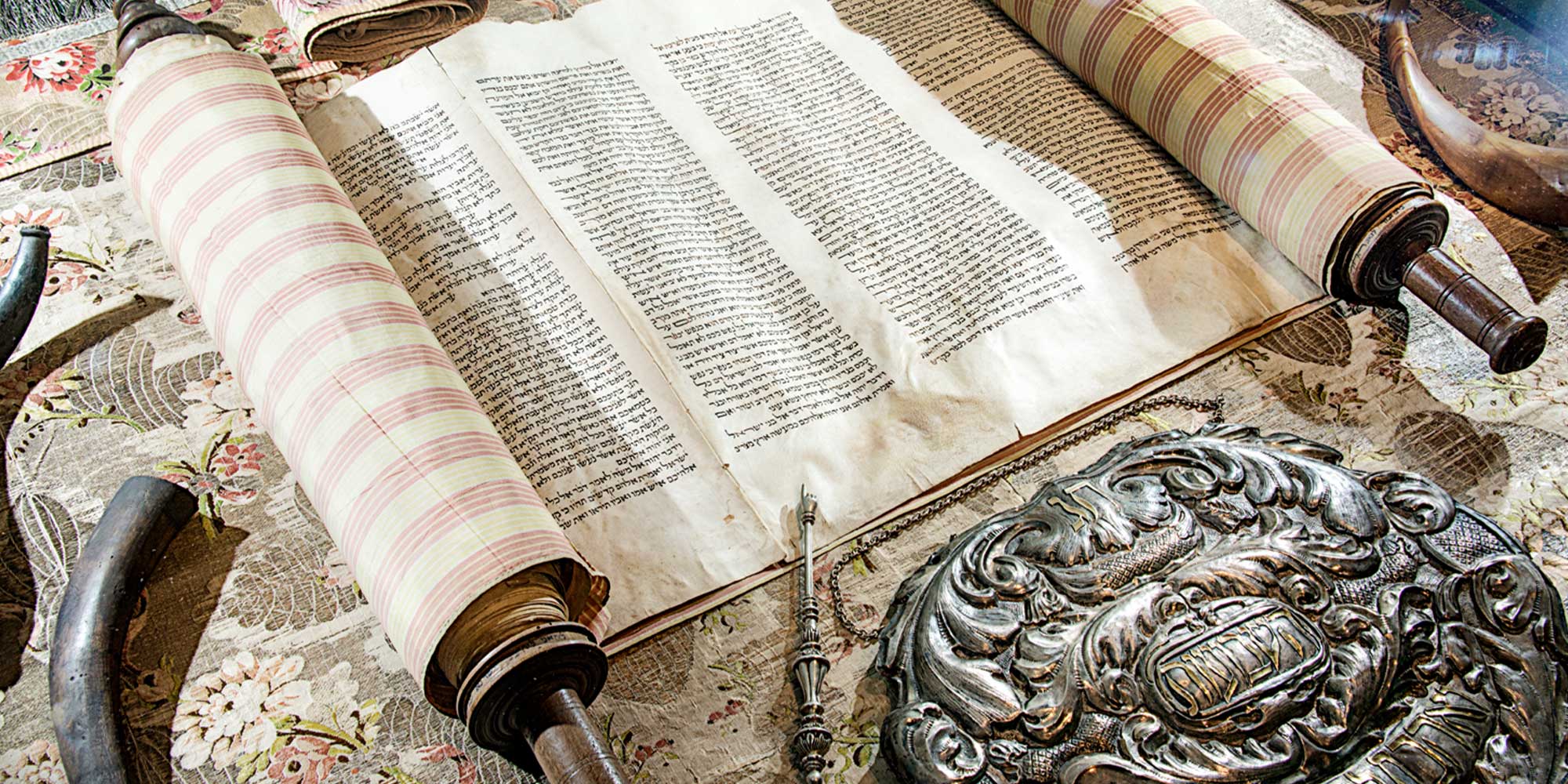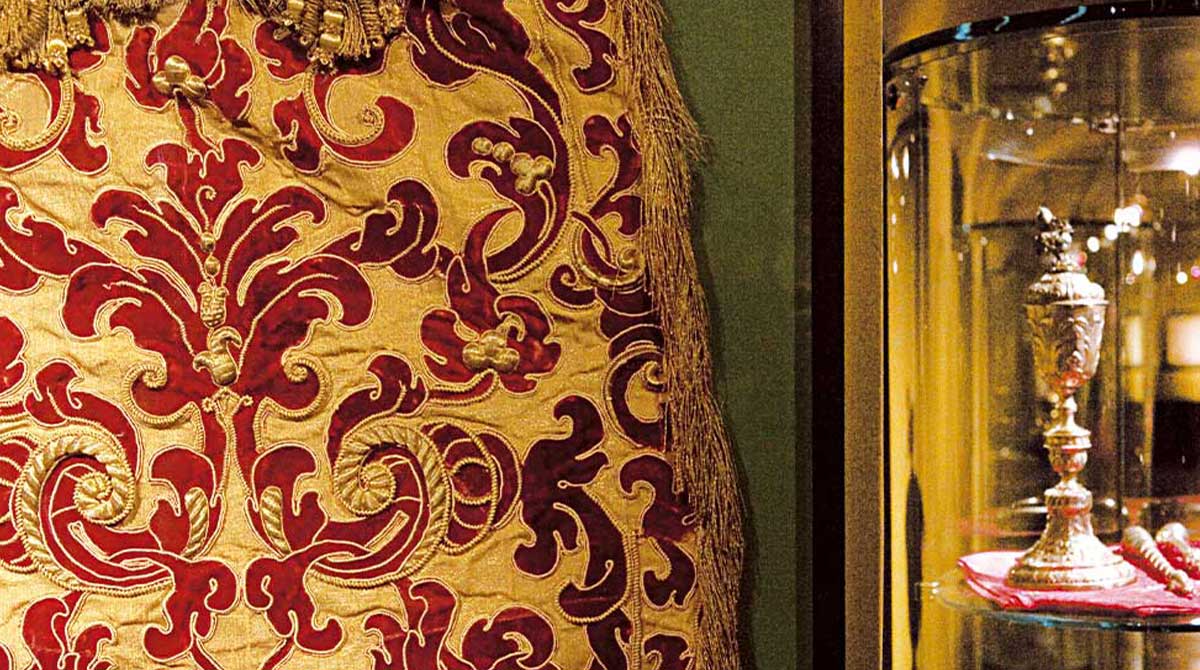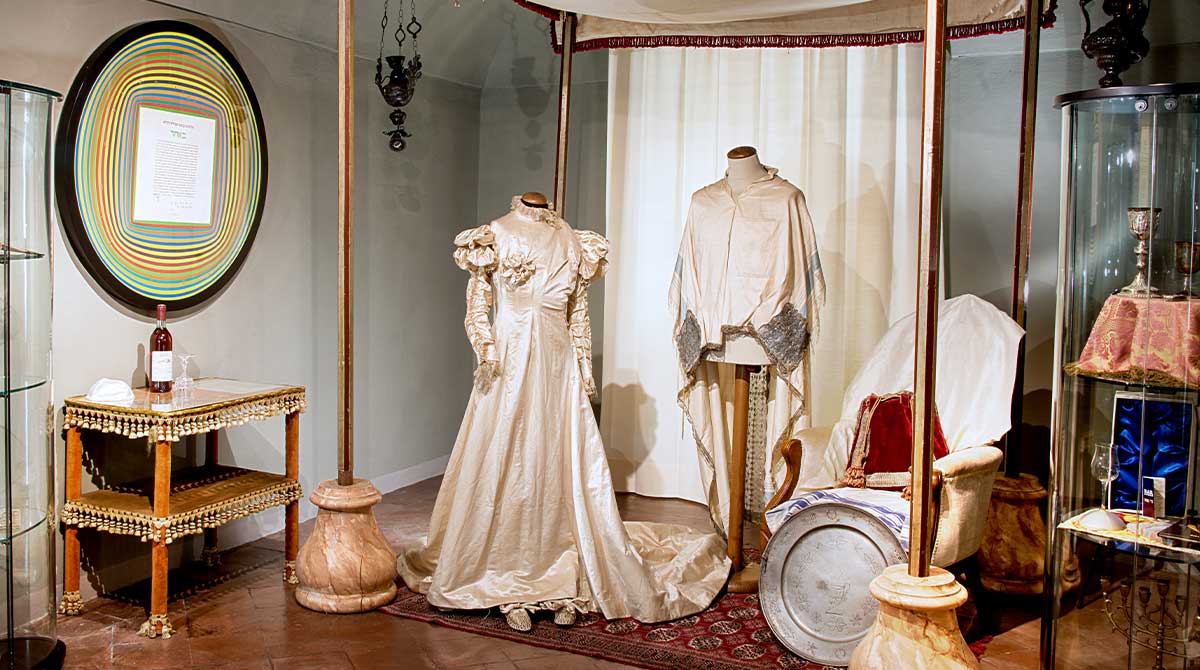The Book of the Law and its ornaments
In Hebrew, Sefer Torah means Book (Sefer) of the Law (Torah), or more accurately, the Book of Teaching. The Torah consists of the first five books of the Bible, the Pentateuch: Genesis, Exodus, Leviticus, Numbers, and Deuteronomy. The Torah is always handwritten on parchment and wrapped in scrolls. The parchment is rolled on two wooden or silver supports, called Atzei Chayim or “Trees of Life”. In Casale Monferrato, some ancient Torah scrolls are kept in the Aron haKodesh (Holy Ark) of the synagogue, while others are on display in the museum (as they are no longer intact for the services) and with their ornaments constitute the most important part of the museum’s exhibition.
The collection also includes numerous parokhet – the curtains of the Holy Ark of the Torah – finely decorated and embroidered, meil – strips of silk or linen that wrap the Torah scrolls when they are not open to be read – and mappah – precious fabrics on which the Torah is placed for reading.
Above the two sticks in which the Torah is wrapped, there are silver tips called rimmonìm (from rimmòn, meaning pomegranate, because the fruit or the flower of the pomegranate is often represented on them). The tas is a medallion resting on the Torah mantle, also used as an ornamental element. It often bears a chiselled inscription indicating whether the scroll is intended to be read on a particular Shabbat or during a particular holiday.
The ornaments of the Torah are magnificently complemented by the atarah, a crown that lends royal dignity to the Torah itself, the sacred Book of the Law.
Typically, the person reading the Torah holds a special hand-shaped pointer, called a yad, which is usually made of silver and is used to underline each word during the reading because each word is important and must not be lost.





